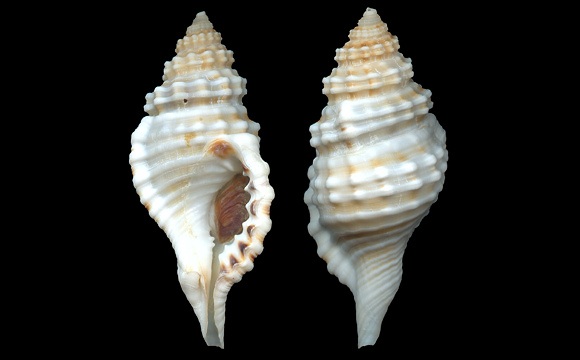
Original taxon: Triton corrugatum. Synonym: affine.
80-100m deep, off Málaga, Andalucia, S. Spain. 70mm.
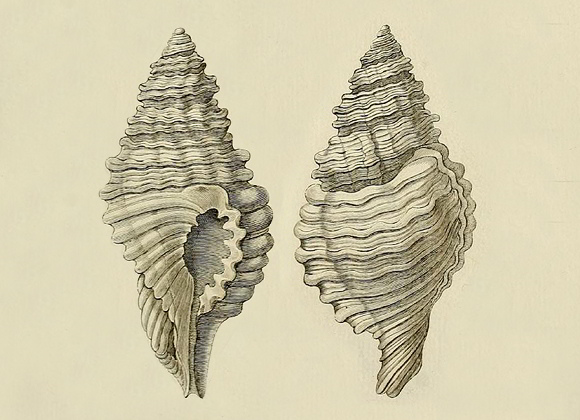
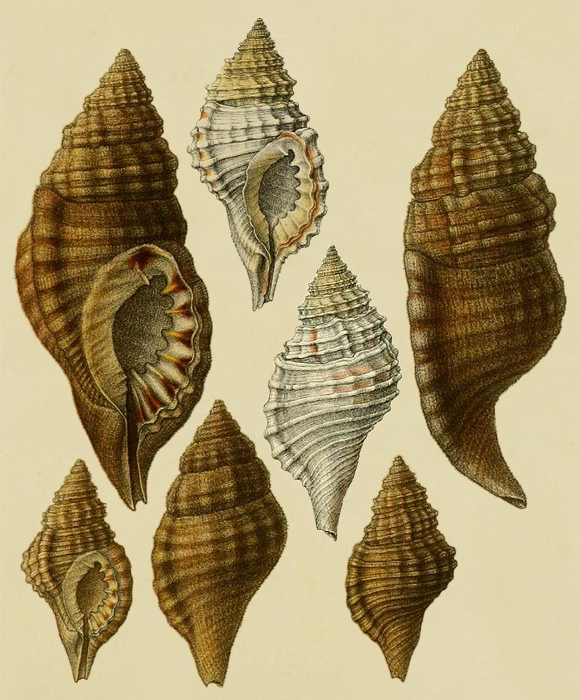
« The shell is spindle-shaped, with a high, pyramidal spire and a slender, bent-back stem; it is thick, greyish-white or yellowish-white, without a pattern – the mouth excepted –, and is covered with a thick, velvety, firm epidermis, which nearly conceals the sculpture; [this periostracum] is tightly folded when dry. Usually there are only two distinct varices, one behind the mouth, the other half behind; in addition, there are still 2-3 little conspicuous ones on the spire. »
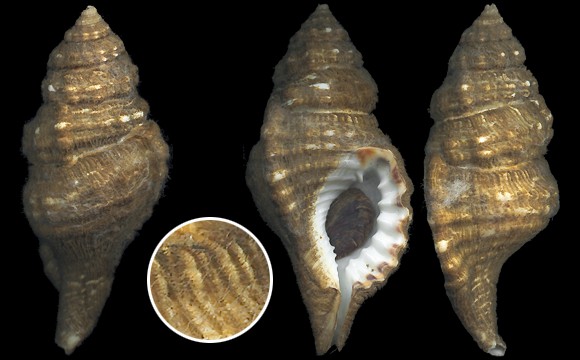
Kobelt: « Whorls 9-10, which are separated by a deep, indented, almost trough-shaped suture; they are hollowed out under the suture, then arched, the upper ones sculpted with pronounced concentric folds, which emerge less and less towards the mouth, and moreover covered with strong spiral-bands, which are usually half-divided by a distinct deep furrow, and are grooved by strip-like growth-striae; they swell into nodes where they cut the folds, especially the hoop just under the hollow. »
Capraia Isola, Archipelago Toscano, W. Italy, 74mm.
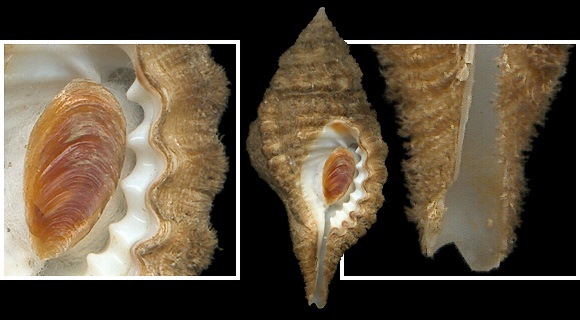
« The mouth is moderately small, irregularly ovate, whitish or light brownish on the palate, narrowed down into a scarcely shorter, tight, almost covered canal. The tail is strongly bent and bears a distinct, firm, appendic callus, which above has a strong tooth, below a number of wrinkles, two of which projecting more sharply just at the junction of the mouth into the canal; in the middle, the spiral hoops shine through; the callus is whitish, the outer livid bordered, above the tooth fold with a maroon spot. The outer lip is thickened, open, lined on the outside by a strong varix, armed on the inside with six strong teeth, which run through in folds to the edge of the mouth and there wear a maroon spot; in the ruts in between, the lip is livid lined. » – 100m deep, Málaga. 68mm. Pure white aperture, despite Kobelt’s description.
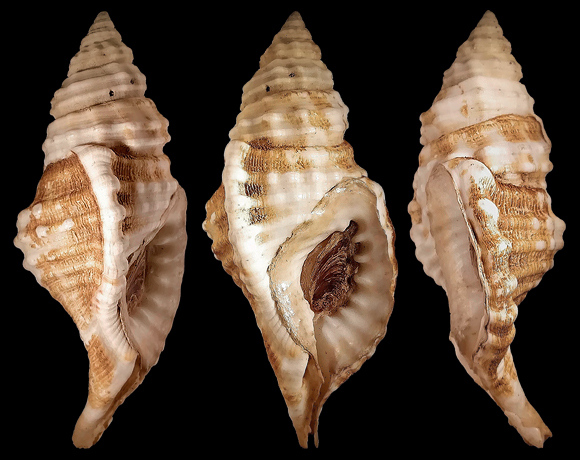
– (CC BY-NC-SA) –